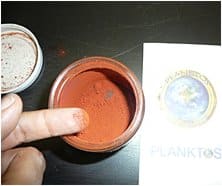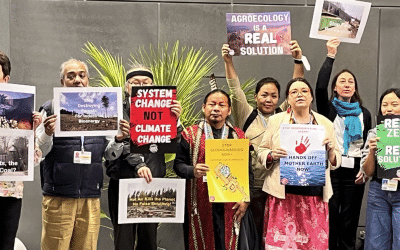 The World Wildlife Fund (WWF) today announced its opposition to a plan by Planktos Inc. to dump iron dust in the open ocean west of the Galapagos Islands. The experiment seeks to induce phytoplankton blooms in the hopes that the microscopic marine plants will absorb carbon dioxide. The company is speculating on lucrative ways to combat climate change. Reports indicate that Planktos, Inc. – a for profit – is planning other large-scale iron dumping in other locations in the Pacific and Atlantic Oceans. The current experiment could negatively impact the unique marine ecosystems of the Galapagos Islands.
The World Wildlife Fund (WWF) today announced its opposition to a plan by Planktos Inc. to dump iron dust in the open ocean west of the Galapagos Islands. The experiment seeks to induce phytoplankton blooms in the hopes that the microscopic marine plants will absorb carbon dioxide. The company is speculating on lucrative ways to combat climate change. Reports indicate that Planktos, Inc. – a for profit – is planning other large-scale iron dumping in other locations in the Pacific and Atlantic Oceans. The current experiment could negatively impact the unique marine ecosystems of the Galapagos Islands.
Scientists have warned against this type of ‘geo-engineering’ schemes, which have – in the case of iron seeding – clearly shownnot to work and could harm ocean life (previous post). Simulations also indicate that such strategies carry considerable environmental risks and could even worsen the effects of climate change (earlier post). For these reasons, the UN’s Intergovernmental Panel for Climate Change has clearly stated in its latest report that none of these techniques carry a priority to mitigate climate change (report of the IPCC’s Working Group III).
There are much safer and proven ways of preventing or lowering carbon dioxide levels than dumping iron into the ocean. This kind of experimentation with disregard for marine life and the lives of people who rely on the sea is unacceptable. – Dr. Lara Hansen, chief scientist, WWF International Climate Change Program
One of those far more feasible and less risky geo-engineering options is the implementation of carbon-negative bioenergy systems (also known as ‘Bio-Energy with Carbon Storage’ or BECS, see earlier post, and here, here).
According to a summary by the United States Government submitted to the International Maritime Organization, Planktos, Inc. – a for-profit company – will dump up to 100 tons of iron dust this month in a 36 square mile area located approximately 350 miles west of the Galapagos Islands. Planktos, Inc. plans to dump the iron in international waters using vessels neither flagged under the United States nor leaving from the United States so U.S. regulations such as the U.S. Ocean Dumping Act do not apply and details do not need to be disclosed to U.S. entities:
World Wildlife Fund’s concern extends beyond the impact on individual species and extends to the changes that this dumping may cause in the interaction of species, affecting the entire ecosystem. There’s a real risk that this experiment may cause a domino effect through the food chain. – Dr. Sallie Chisholm, microbiologist, MIT and board member, World Wildlife Fund
Potential negative impacts of the Planktos experiment include:
- Shifts in the composition of species that make up plankton, the base of the marine food chain, would cause changes in all the species that depend on it.
- The impact of gases released by both the large amount of phytoplankton blooms induced by Planktos, Inc. and resulting bacteria after the phytoplankton die.
- Bacterial decay following the induced phytoplankton bloom will consume oxygen, lowering oxygen levels in the water and changing its chemistry. This change in chemistry could favor the growth of microbes that produce powerful greenhouse gases such as nitrous oxide.
- The introduction of large amounts of iron to the ecosystem – unless it is in a very pure form, which is likely cost-prohibitive at the scales proposed – would probably be accompanied by other trace metals that would be toxic to some forms of marine life.
In the waters around the Galapagos, some 400 species of fish swim with turtles, penguins and marine iguanas above a vast array of urchins, sea cucumbers, crabs, anemones, sponges and corals. Many of these animals are found nowhere else on earth.
If you feel like protesting against Planktos Inc.’s questionable experiment – we do – then join us in writing to the company to express your concerns. Send your email to Russ George, CEO of Planktos Inc.:russ.george@planktos.com.



